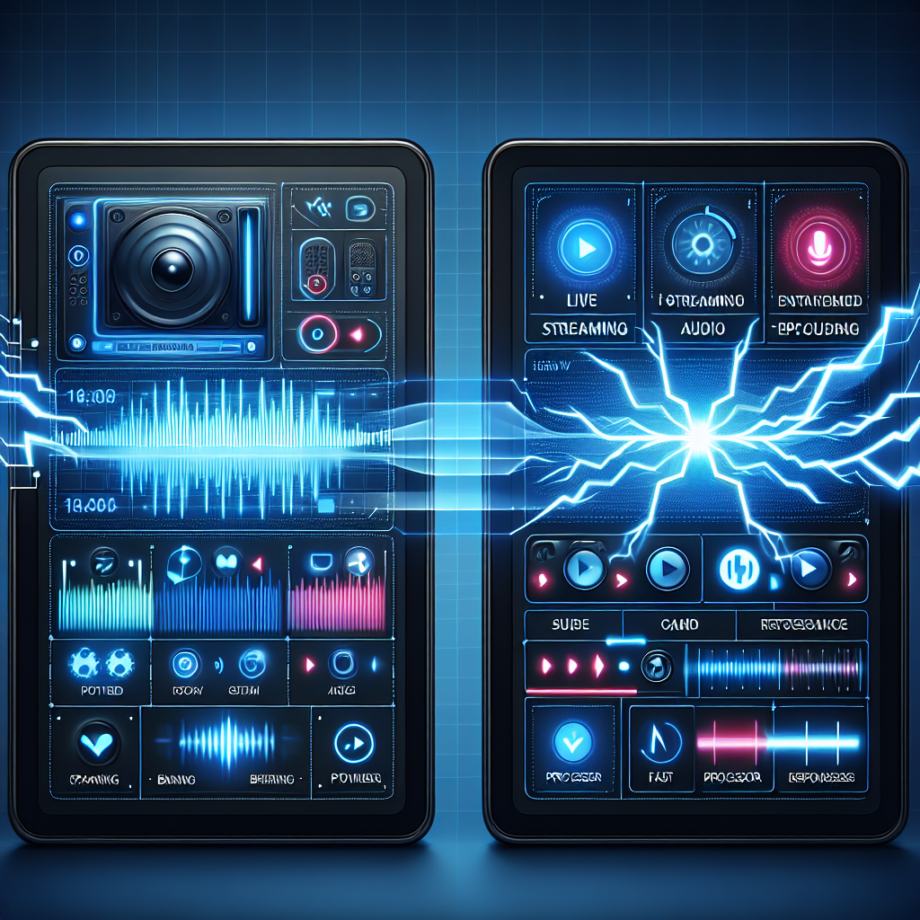
In recent years, the demand for tablets has skyrocketed, driven by their versatile use cases, including media consumption, online gaming, and particularly live streaming. However, not all tablets are created equal when it comes to live streaming. Tablets optimized for this purpose offer distinct advantages over standard models. This article delves into these differences, exploring the technical specifications, user experiences, and overall performance of both types.
Key Differences Between Live Streaming Tablets and Standard Models
The following table summarizes the primary distinctions between tablets optimized for live streaming and standard tablets:
| Feature | Live Streaming Tablets | Standard Tablets |
|---|---|---|
| Processor | High-performance, Multi-core | Standard, Dual-core or Quad-core |
| Camera Quality | High-resolution, Multiple lenses | Standard resolution |
| Connectivity | Advanced (5G, Wi-Fi 6) | Standard (4G, Wi-Fi) |
| Battery Life | Extended, Long-lasting | Standard, Moderate lifespan |
| Audio Quality | Enhanced, Stereo speakers | Standard, Mono or simple stereo |
| Cooling System | Advanced cooling mechanisms | Basic cooling or none |
Processor Power
One of the most significant differences lies in the processor’s power. Tablets optimized for live streaming usually feature high-end, multi-core processors designed to handle the intensive computational workload of streaming high-quality video.
Why It Matters
High-performance processors enable smoother video rendering, quicker data processing, and less lag, ensuring a more seamless streaming experience for both the streamer and the viewers.
Camera Quality
Another crucial difference is the camera quality. Live streaming tablets often come equipped with high-resolution cameras and multiple lenses to offer different viewing angles and superior video clarity.
Importance of Camera Features
Better camera quality translates to sharper, more professional streams, making it easier to engage viewers and maintain a higher level of interaction.
Connectivity Options
Connectivity is another domain where live streaming tablets outshine standard models. With the integration of advanced connectivity options such as 5G and Wi-Fi 6, these tablets ensure faster and more stable internet connections.
Enhanced Streaming Experience
Reliable and fast internet connections reduce buffering and disconnections, providing a more enjoyable viewing experience.
Battery Life
Tablets optimized for live streaming also tend to have superior battery life. These devices are designed with long-lasting batteries to ensure prolonged usage without frequent recharges.
The Need for Extended Battery Life
Extended battery life is critical for live streaming, especially during long sessions, to avoid interruptions and maintain viewer engagement.
Audio Quality
Audio quality is another area where live streaming tablets have an edge. These devices often feature enhanced audio systems, including stereo speakers, to deliver clearer and more immersive sound.
Sound Matters
Improved audio quality enhances the overall viewing experience, making streams more engaging and enjoyable for the audience.
Cooling Systems
Last but not least, advanced cooling mechanisms are a hallmark of live streaming tablets. These systems help manage the heat generated by prolonged video streaming, ensuring the tablet operates efficiently.
Why Cooling is Important
Effective cooling systems prevent overheating, allowing for longer usage periods and protecting the hardware from potential damage.
Conclusion
While standard tablets offer a range of functionalities suitable for various tasks, tablets optimized for live streaming come with specialized features that significantly enhance the streaming experience. From high-performance processors and advanced connectivity options to superior camera quality and extended battery life, these devices are built to meet the unique demands of live streaming. For anyone serious about delivering professional-quality streams, investing in a live streaming-optimized tablet is a wise choice.
